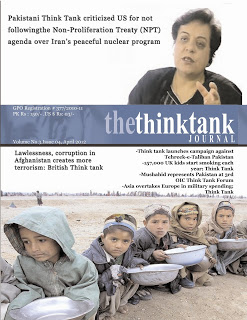As clocks struck midnight on October 1, 2025, the United States plunged into its first federal government shutdown in nearly seven years, leaving millions of Americans bracing for widespread disruptions. What started as a high-stakes partisan standoff in the Senate has now escalated into real-world fallout: furloughed workers, stalled services, and economic tremors rippling through everyday lives. With federal funding lapsing after a failed last-minute vote, this isn’t just Washington drama—it’s a wake-up call for families, businesses, and the economy.
The Dramatic Vote That Sealed the Deal:
Tuesday, September 30, 2025, unfolded like a political thriller at the Capitol. Republicans pushed a stopgap bill to extend government funding for seven more weeks, aiming to buy time for broader budget talks. But in a razor-thin 55-45 vote, the measure crashed and burned—short of the 60 votes needed to overcome a Democratic filibuster. The chamber’s tension was palpable, with lawmakers trading barbs as the clock ticked toward fiscal year-end chaos.
This wasn’t a surprise to insiders. Negotiations had crumbled over irreconcilable demands: Democrats insisting on immediate extensions for Affordable Care Act subsidies amid rising health premiums, plus rollbacks on proposed Medicaid reductions. Republicans, holding a slim 54-seat majority, framed their bill as a clean slate to avoid “reckless spending.” By evening, the White House’s Office of Management and Budget greenlit shutdown protocols, signaling agencies to brace for an “orderly” halt.
Now, as of early October 1, non-essential operations are frozen. National parks close their gates, IRS tax refunds delay, and passport processing grinds to a halt—echoing the playbook from past crises but amplified by today’s inflation-weary economy.
The Blame Game Heats Up:
No shutdown happens in a vacuum, and this one’s fueled by a fiery cross-aisle feud. President Donald Trump wasted no time staking his ground, declaring the closure “probably likely” during a White House briefing on September 30. He didn’t mince words, warning of “irreversible” moves like slashing Democratic-favored programs and even mass layoffs to “cut vast numbers of people out.” Trump’s rhetoric paints Democrats as obstructionists, betting that public frustration will swing voters his way ahead of midterms.
On the flip side, Senate Democratic Leader Chuck Schumer fired back, accusing Republicans of “bullying” tactics by stonewalling talks on expiring ACA tax credits that shield millions from premium hikes. “We hope they sit down and talk,” Schumer urged post-vote, “otherwise, it’s the Republicans driving us straight toward shutdown.” Democrats leverage their filibuster power to push for health protections, viewing the GOP bill as a Trojan horse for deeper cuts.
This tit-for-tat mirrors the 2018-2019 shutdown under Trump’s first term, which dragged on for 35 days over border wall funding. Back then, it cost the economy $11 billion; experts now warn this round could double that if it stretches beyond a week, hitting GDP growth already strained by global tensions.
Everyday Americans Feel the Squeeze:
Forget the Beltway battles—this shutdown’s true sting lands on you. An estimated 750,000 federal employees face furloughs without pay, while contractors and essential workers (like air traffic controllers) pull double duty unpaid. That’s not just pink slips; it’s families skipping groceries, delaying medical bills, and dipping into savings amid 3.5% inflation.
Key disruptions rolling out today:
- Travel Nightmares: Smithsonian museums shutter, national parks bar entry (except fee-collected sites), and Smithsonian zoos close—bye-bye fall foliage hikes.
- Financial Hiccups: New loans via Small Business Administration freeze, E-ZPass toll relief stalls, and veterans’ benefits processing slows.
- Health and Safety Gaps: FDA food inspections drop by 50%, disease outbreak monitoring lags, and Head Start programs for low-income kids halt.
Small businesses, already reeling from supply chain woes, could lose $120 million daily in federal contracts alone. And with paychecks on ice, consumer spending—70% of the economy—takes a nosedive, potentially spiking unemployment to 4.2% by month’s end.
Pro tip: If you’re a fed worker, check USA.gov for backpay guarantees (they come eventually). Stock up on essentials, monitor your 401(k) for market dips, and vote in local elections—your voice amplifies amid the noise.
Why This Shutdown Feels Like Déjà Vu
Flash back to December 2018: Trump’s border wall obsession locked out 800,000 workers for over a month, the longest shutdown ever. It birthed “Trump shutdown” memes and a 0.3% GDP dent. Fast-forward to 2025, and the script flips—now it’s health care and spending priorities clashing, but the pain points are eerily similar.
What’s different? A more polarized Congress and a Trump emboldened by recent wins. Analysts predict this could last 10-20 days unless a bipartisan “clean” bill emerges, but with midterms looming, compromise feels like a long shot.
As dawn breaks on Day 1 of the shutdown, eyes turn to emergency sessions. Republicans hint at a revised bill stripping Democratic “poison pills,” while the White House floats executive tweaks to soften blows. But Trump’s threat of “retribution” via program cuts could harden lines further.
Optimists point to past quick fixes, like the 2021 three-day blip. Pessimists? They see echoes of 2013’s 16-day saga over Obamacare. Track updates via official channels, and remember: Shutdowns end, but lessons linger. This could spark real reform—or just more rallies.In the end, the 2025 shutdown isn’t about one vote; it’s a symptom of a fractured system where policy wins trump people. As Americans adapt, demand better:



